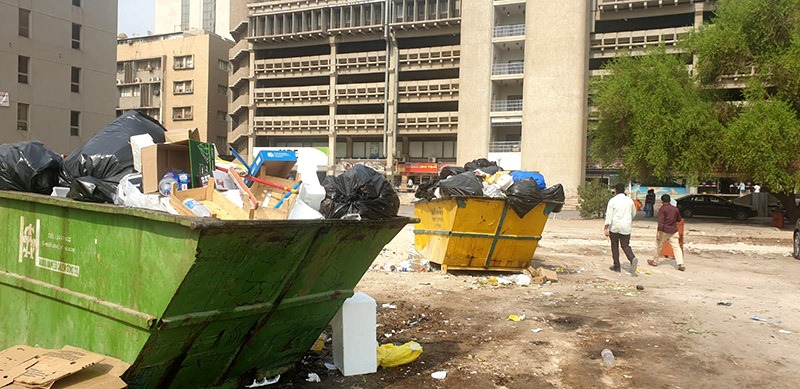The stench from rotten garbage, overflowing waste containers surrounded by strewn garbage bags and fed on by stray dogs, cats, mice, and insects has become a common sight in many parts of Kuwait. The situation not only poses a threat to people living and visiting these areas but also adds to the environmental pollution.
Surveys conducted by the media among people in these areas as well as the general public revealed that the authorities, in particular the municipality, were mainly responsible for the situation by not addressing the garbage issue in an efficient manner and without long-term plans in place to tackle the growing garbage.
Kuwait grapples with a significant waste volume, estimated at over 6,000 tons per day, and a high average waste generation per capita, reaching 1.5 kilograms daily — a high figure relative to global figures. And, this garbage is growing at an alarming pace as population increases and more new townships and residential areas get occupied.
Tackling this burgeoning waste will require an overhaul of the current garbage system of collection and disposal. Achieving this objective will also hinge on the strength of the Kuwait Municipality strengthening its supervisory role over cleaning companies, holding non-compliant owners accountable, and devising innovative mechanisms to minimize environmental pollution in both residential and investment zones.
Experts have proposed the installation of underground waste disposal systems to address this issue, but that would mainly help to hide the garbage from public view, without addressing the underlying problems. Expressing his dissatisfaction with the current practice of placing garbage containers in private housing areas, Municipal Council member Fahd Al-Abduljader explained that the garbage issue was a shared responsibility of the municipality, the cleaning companies contracted for the purpose, and the community.
He added that the municipality’s responsibility is mainly to set regulations and controls and address the extent of compliance with these regulations by cleaning companies in collecting and disposing of the garbage in locations designated for this purpose. The municipality is also responsible for ascertaining the extent and impact of violations and ensuring appropriate fines and penalties to deter violators.
Municipal Council member Engineer Ismail Behbehani said, “The appearance of garbage containers in various areas of Kuwait is unacceptable, and does not reflect the civilized appearance at all. “The reasons are many and common, but the main culprit is the Kuwait Municipality, as it is the one that manages the cleanliness file, and it is the one that concludes contracts with companies.” He underlined the need for a clear mechanism that includes requirements and penalties that regulate the places where containers are placed, in a way that achieves what is required in a civilized manner and reflects the cleanliness of the area.
Deputy Director of the Municipality for Services Affairs and Head of the Public Cleanliness Committee in the Municipality, Mishal Al-Azmi, described the waste sorting process carried out by workers of some cleaning companies as “criminal neglect” and that it is absurd, not a sorting process, stressing that the municipality is committed to the strategy of the Environment Public Authority regarding waste sorting and disposal.
Al-Azmi stressed the need to change the current system, especially since the containers in private and model housing areas cannot accommodate waste outputs, and likewise in investment areas there is a lack of commitment to waste removal timings. He pointed out that “the current reality of containers is that a majority of people and home and property owners do not want to place containers in front of their properties, so containers end up being kept together in one place.
Another member Engineer Abdul Latif Al-Daei confirmed that the level of cleanliness in Kuwait is very low, and the general appearance of garbage containers is miserable. He said, “I am not satisfied with the appearance of the containers in private housing, nor even the mechanism by which the garbage is removed and the containers are cleaned, even though the trash can must be cleaned, not just emptied of waste, and these matters are supposed to be part of cleaning contracts, but it is not done and we see it with our naked eyes.”
Al-Daei pointed out there is no study to improve the visual appearance of the shape, number and location of containers, not to mention the lack of sorting of containers, especially since special containers for plastic and organic waste are supposed to be placed tightly closed to avoid tampering with by cats and dogs.

